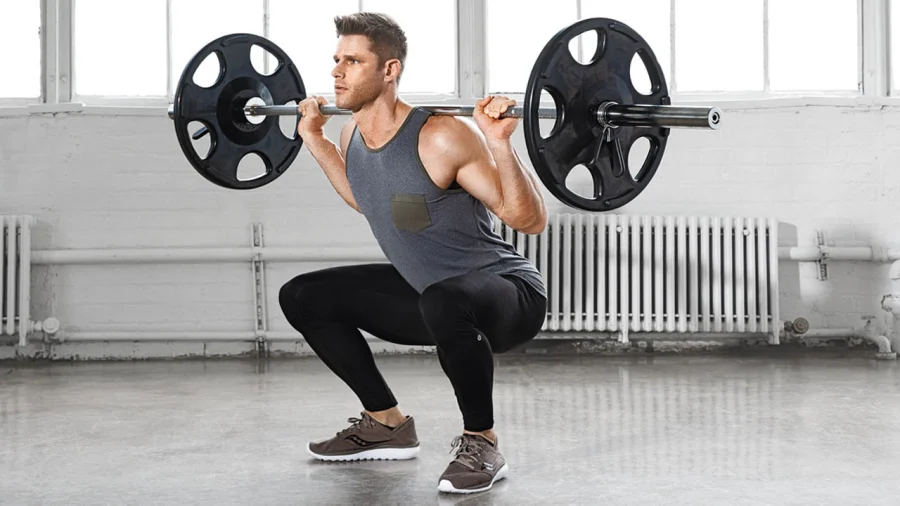Isometric Training Exercises
Isometric training involves the engagement of muscles while doing exercises without changing their length. This form of exercise allows your muscles to be filled with tension while keeping the joints intact or in one position.
The isometric exercises help to build endurance and improve posture by reinforcing and balancing your muscles. Isometric contractions happen when there is tension building in your muscles, but the length remains the same.
There should be no instances of your muscles shortening or lengthening. Your joints need to hold their positions while performing isometric exercises. Maintain the training stance a couple of minutes without moving your muscles.
Isometric training can comprise different methods, but the idea remains to contract the muscles without shortening or lengthening them. These methods do not involve any movements, and a person should maintain the stance for an extended period.
Isometric training is commonly suggested for people that are recovering from injuries, or have a lack of space to work out, etc. The training methods help in regaining strength and endurance.
Let us look at some of the isometric training methods and their benefits.

What Are The Examples Of Isometric Training Methods?
There are a couple of isometric training methods you might have come across in gyms or on workout videos on the internet, like squatting, planking, wall-sitting, etc. These workouts are not expensive compared to other forms of exercise, and you can perform them using items you can find at home.
Check out some of the most common types of Isometric training methods below to add to your training regime.
Dead Hang
The Dead Hang is one of the most common forms of isometric training you will come across in gyms. It helps the upper body by targeting the muscles. This method also helps to improve your grip strength and spinal decompression while stretching your back.
Here are the steps you can follow to perform this training method. You can do this at home if you do not have a gym membership.
- If you are in a gym, look for a pull-up bar and grab it with your palms facing forward.
- This method aims to hang on the bar to build muscle endurance, so lift your feet above the ground and keep them crossed.
- Hang on to the bar for as long as possible without any movement to achieve maximum benefits.
You can purchase a pull-up bar and fit it above the door to do this at home.
Planks
Planking helps you contract your muscles by holding them in one position without bending any joints. There are no movements involved in this isometric training method, and your muscles do not shorten or lengthen.
A plank is primarily a core exercise but targets all your muscles. It’ll help you garner strength in your abdomen and maintain stability in your core and shoulders. The biggest beneficiaries of this exercise are your stabilizer muscles, which are used to keep your muscles and joints stable.
Planking is a simple isometric training method, and here are the steps required to perform a plank.
- Place your body in a position as you would when you are performing push-ups.
- Once you are in that position, fold your elbows so that your upper forearm lays flat on the floor. The arms should be inside the shoulder line and not parallel with the shoulders.
- Tighten your core muscles and maintain the position of your body in a linear state.
- If you are new to planking, you can hold the position for 10 seconds and rest. Increase the duration as you get more used to it.
Wall Sit
The Wall Sit exercise is the simplest but one of the most challenging isometric exercises to pull off. It does not have the requirement of any equipment. As long as you have access to a wall, your Wall-Sitting training can be underway.
The significance of this training method is that it is a great way to build strength and endurance in your core, calves, quads, glutes, etc. This exercise depends on the how long you can last in the wall-sit position, but it may be detrimental to your muscles if you overdo it.
The best way to realize that you probably need to stop this exercise is when your legs start quivering. Follow these simple steps to perform the wall-sit exercise method.
- Stand one foot or two away from the wall in a straight position.
- Lean back towards the wall flatly and slowly lower your body into a sitting stance.
- The idea of this method is to sit with your back against the wall in a 90-degree position and maintain it as long as possible. This helps build tension in your core.
- Once you are done, get up, and repeat the same action a couple of times.
Squats
Squatting helps you to build strength and endurance in your leg muscles and also helps to improve your lower body mobility. You can perform this exercise with or without adding extra weight.
Here are some steps you can follow to perform squats.
- Stand and keep your legs apart with at least a foot difference.
- Bend your knees and push your body down, as you would do while sitting.
- Extend your arms forward as you push your body down and maintain this position for several seconds or a couple of minutes.
- Once you feel strain in your arms and knee joints, rise, and repeat.
Benefits of Isometric Training
When you plan on a workout routine, ensure you include a couple of isometric exercises to help build muscle endurance. Here are some benefits of isometric training.
- Isometric training methods help to decrease blood pressure.
- It is helpful to strengthen the core muscles.
- Isometric exercises have the ability to ignite multiple muscle fibers at once.
- These exercises help you balance your body and hold weights for extended periods.
- Isometric exercises are beneficial for those recovering from injuries.




